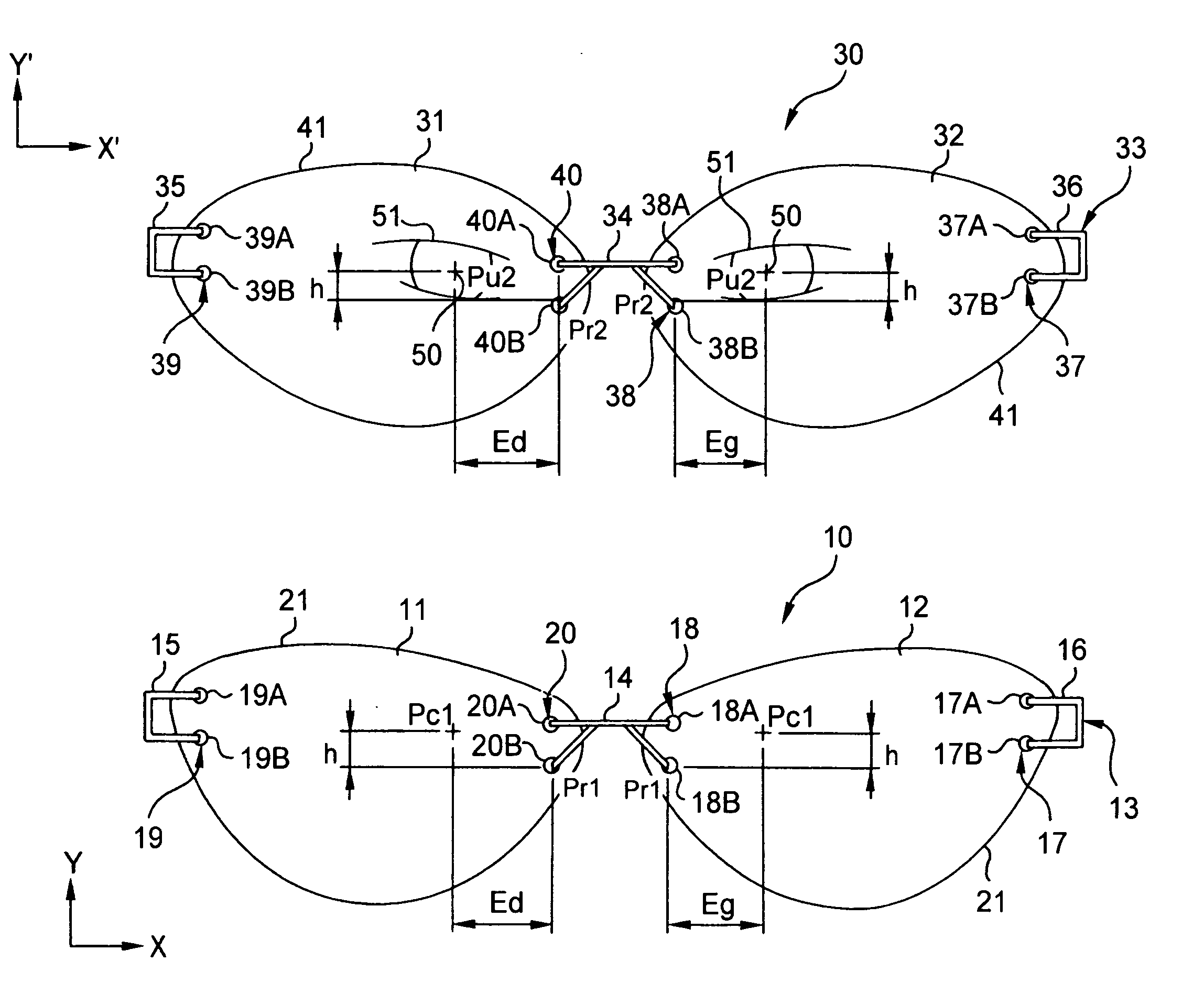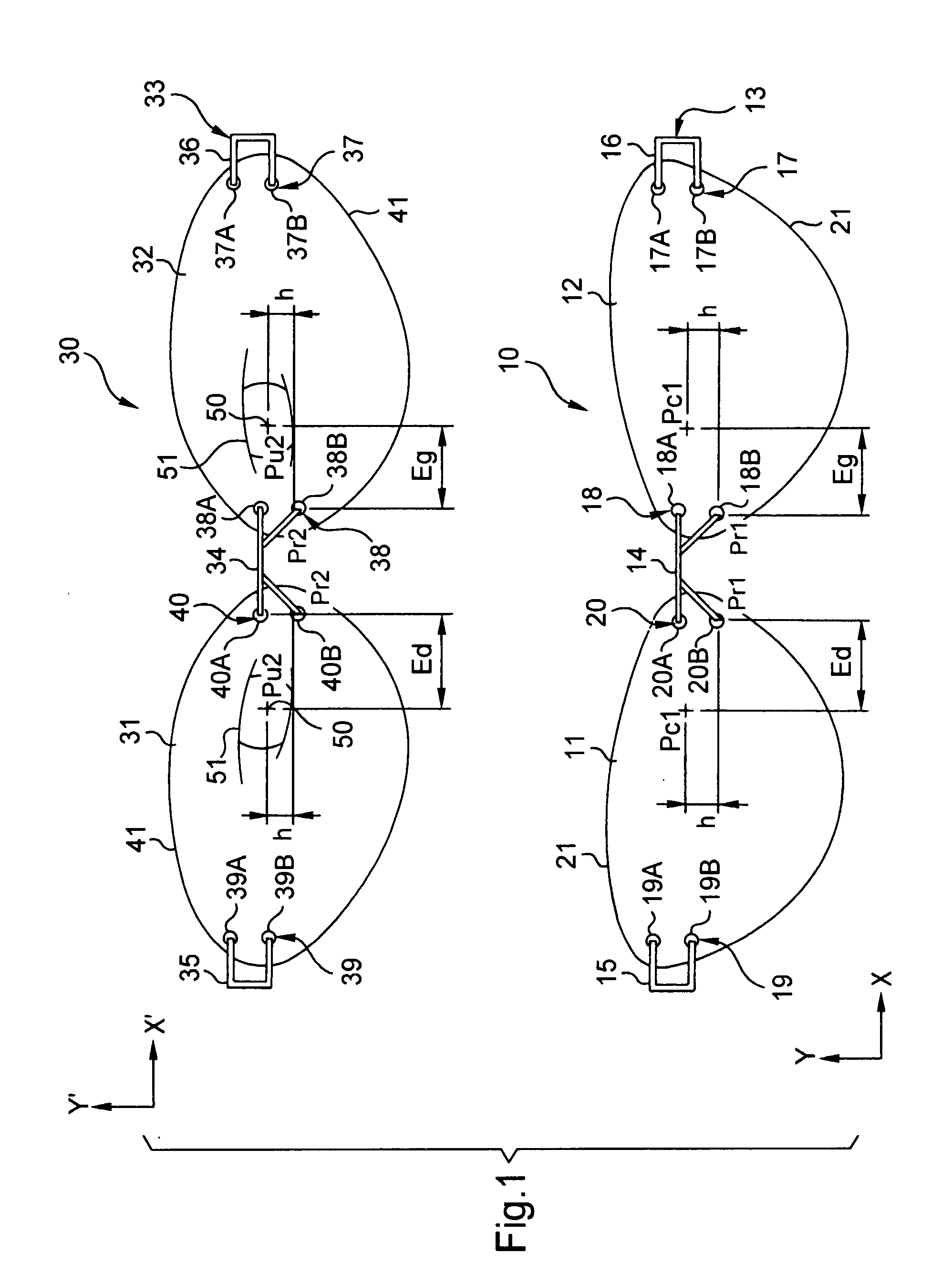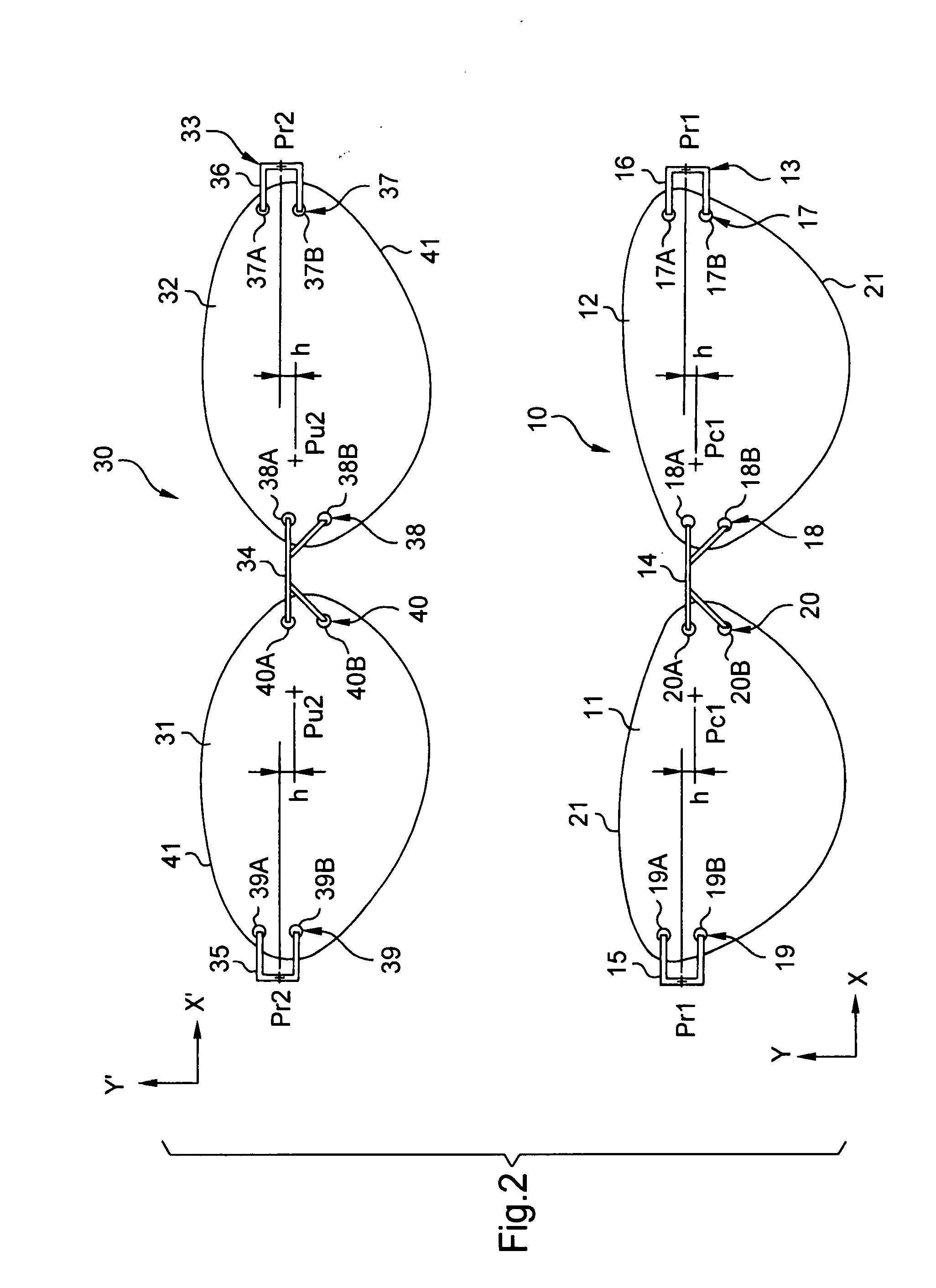Method of Centering an Ophthalmic Lens on a Rimless Frame
a technology of ophthalmic lenses and rimless frames, applied in the field of eyeglasses, can solve the problems of restricting the freedom that wearers can be given in selecting lens shapes, and achieve the effect of increasing the accuracy
- Summary
- Abstract
- Description
- Claims
- Application Information
AI Technical Summary
Benefits of technology
Problems solved by technology
Method used
Image
Examples
Embodiment Construction
[0053]The following description with reference to the accompanying drawings given as non-limiting examples make it easy to understand what the invention consists in and how it can be performed.
[0054]In the accompanying drawings:
[0055]FIG. 1 is a diagrammatic view of the presentation eyeglasses, the target eyeglasses, and the characteristic distances and points of the centering method of the invention;
[0056]FIG. 2 is a diagrammatic view of the eyeglasses of FIG. 1 showing the characteristic distances and points of a first variant of the centering method;
[0057]FIG. 3 is a diagrammatic view of the eyeglasses of FIG. 1 showing the characteristic distances and points of a second variant of the centering method;
[0058]FIG. 4 is a diagrammatic view of the eyeglasses of FIG. 1 showing the characteristic distances and points of a third variant of the centering method; and
[0059]FIG. 5 is a diagrammatic view of the eyeglasses of FIG. 1 showing the characteristic distances and points of a fourth...
PUM
 Login to View More
Login to View More Abstract
Description
Claims
Application Information
 Login to View More
Login to View More - R&D
- Intellectual Property
- Life Sciences
- Materials
- Tech Scout
- Unparalleled Data Quality
- Higher Quality Content
- 60% Fewer Hallucinations
Browse by: Latest US Patents, China's latest patents, Technical Efficacy Thesaurus, Application Domain, Technology Topic, Popular Technical Reports.
© 2025 PatSnap. All rights reserved.Legal|Privacy policy|Modern Slavery Act Transparency Statement|Sitemap|About US| Contact US: help@patsnap.com



